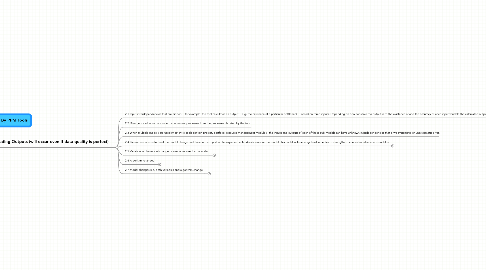
1. 1. Low Data Quality
1.1. 1.1 lack of completeness
1.1.1. 1.1.1 lack of motivation
1.1.2. 1.1.2 lack of time
1.1.3. 1.1.3 data not available when needed
1.1.3.1. 1.1.3.1 lack of interfaces/connections
1.1.3.2. 1.1.3.2 tool not optimized for the environment
1.1.4. 1.1.4 data too difficult to get
1.1.5. 1.1.5 gaming the system
1.1.6. 1.1.6 lack of expertise
1.1.7. 1.1.7 no place to enter relevant data (e.g. PTO hours)
1.2. 1.2 lack of timeliness
1.2.1. 1.2.1 lack of motivation
1.2.2. 1.2.2 lack of time
1.2.3. 1.2.3 data not available when needed
1.2.3.1. 1.2.3.1 lack of interfaces/connections
1.2.3.2. 1.2.3.2 tool not optimized for the environment
1.2.4. 1.2.4 data too difficult to get
1.2.5. 1.2.5 gaming the system
1.2.6. 1.1.2.6 lack of expertise
1.3. 1.3. inaccurately entered data
1.3.1. 1.3.1 lack of motivation
1.3.2. 1.3.2 lack of time
1.3.3. 1.3.3 data not available when needed
1.3.3.1. 1.3.3.1 lack of interfaces/connections
1.3.3.2. 1.3.3.2 tool not optimized for the environment
1.3.4. 1.3.4 data too difficult to get
1.3.5. 1.3.5 gaming the system
1.3.6. 1.3.6 lack of expertise
1.3.7. 1.3.7 sensitivity to sequence in which data is entered (e.g. one input has to be set before the other but isn't)
1.3.8. 1.3.8 sensitivity to interdependencies (e.g. two inputs need to be entered in concert but are typically set independently)
1.3.9. 1.3.9 Misaligned map of resources to tasks (things don't quite fit neatly into pigeon holes when mapping resources to tasks). This results in the wrong amounts ascribed to the wrong things.
1.4. 1.4. imprecisely entered data
1.4.1. 1.4.1 lack of motivation
1.4.2. 1.4.2 lack of time
1.4.3. 1.4.3 data not available when needed
1.4.3.1. 1.4.3.1 lack of interfaces/connections
1.4.3.2. 1.4.3.2 tool not optimized for the environment
1.4.4. 1.4.4 data too difficult to get
1.4.5. 1.4.5 gaming the system
1.4.6. 1.4.6 lack of expertise
1.4.7. 1.4.7 sensitivity to sequence in which data is entered (e.g. one input has to be set before the other but isn't)
1.4.8. 1.4.8 sensitivity to interdependencies (e.g. two inputs need to be entered in concert but are typically set independently)
1.4.9. 1.4.9 Misaligned map of resources to tasks (things don't quite fit neatly into pigeon holes when mapping resources to tasks). This results in the wrong amounts ascribed to the wrong things.
2. 2. Misleading Outputs (will occur even if data quality is perfect)
2.1. 2.1 Input interdependencies that are hidden -- for example, the tool calculates an output -- e.g. the existence of a particular bottleneck -- based on three inputs. Depending on how sensitive the output is to the existence of and the accuracy of each input variable the calculated output can turn out to be useless. This is a pernicious because it is hidden to the user of the tooland puts the user in the dangerous position of making bad decisions due to algorithmic subtleties. In other words, the user has no grip on the amount of variance in the result. This makes it dangerous to base decisions on this output.
2.2. 2.2 Divergence of actual resource management processes from the processes dictated by the tool
2.3. 2.3 When multiple models are used (most PPM tools contain project, portfolio, resource management modules), the inputs and outputs of each of these sub-models can have unknown interdependencies that drive systematic or unsystematic error.
2.4. 2.4 Parameters or constants of the model change and these are not part of the experiential feedback loop for the model (this could include weights of variables or strengths of connections between variables.
2.4.1. 2.4.1 internal factors (new project types, new resource types, new business models, new resourcing strategies, ...)
2.4.2. 2.4.2 external factors (macroecononic, microeconomic, exogenous - e.g. Gladwell: "your algorithm doesn't accommodate the fact that the Russian government decides to default on its loans." [http://www.gladwell.com/2002/2002_04_29_a_blowingup.htm])
2.5. 2.5 Variables of the model change or new ones need to be added
2.5.1. 2.5.1 internal factors (new project types, new resource types, new business models, new resourcing strategies, ...)
2.5.2. 2.5.2 external factors (macroecononic, microeconomic, exogenous)
2.6. 2.6 Algorithm changes
2.6.1. 2.6.1 internal factors (new project types, new resource types, new business models, new resourcing strategies, ...)
2.6.2. 2.6.2 external factors (macroecononic, microeconomic, exogenous)
2.7. 2.7 Model changes (i.e. both variables and algorithm change)
2.7.1. 2.7.1 internal factors (new project types, new resource types, new business models, new resourcing strategies, ...)
2.7.2. 2.7.2 external factors (macroecononic, microeconomic, exogenous)
